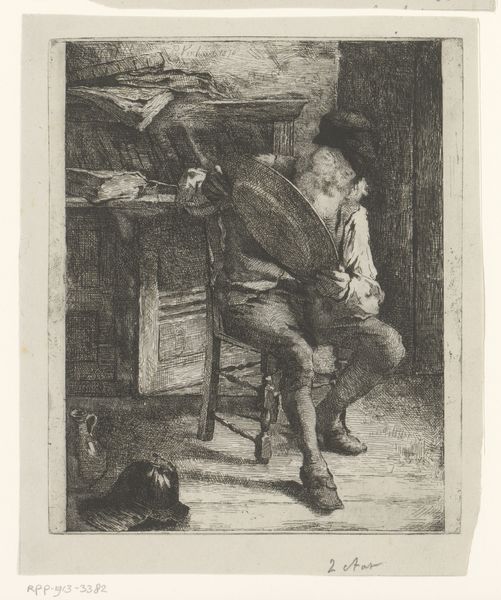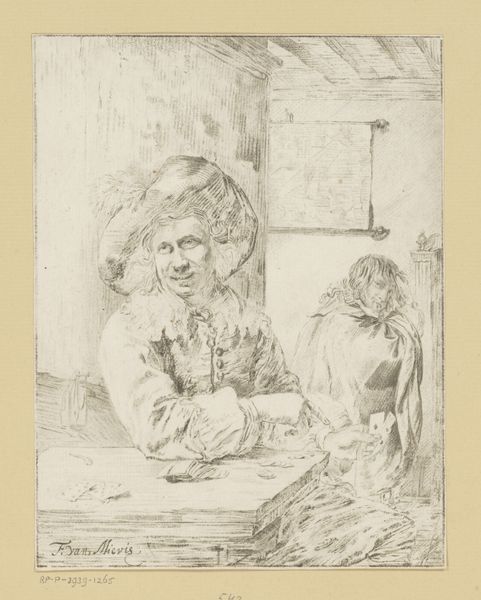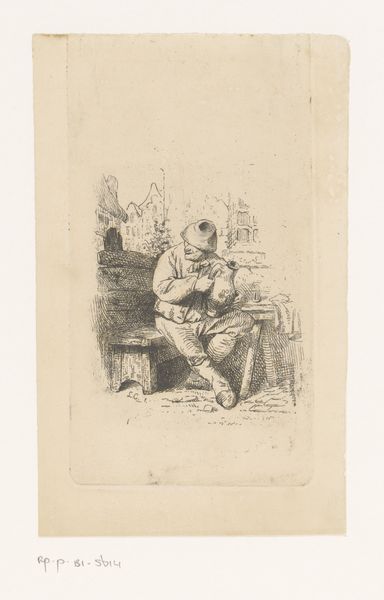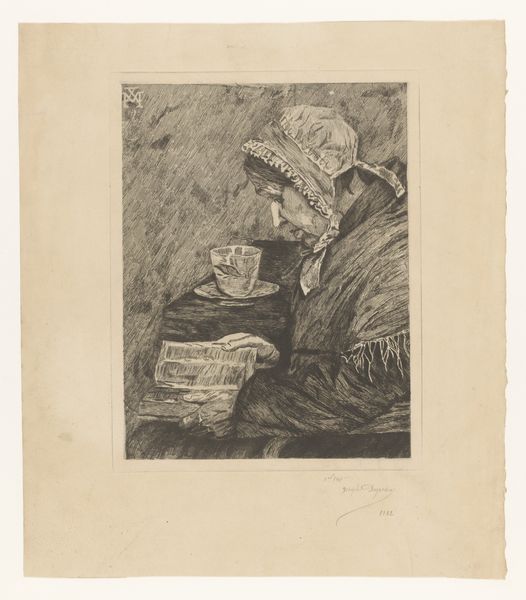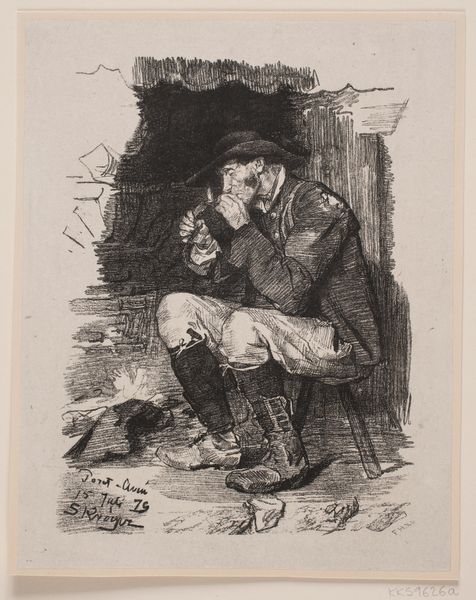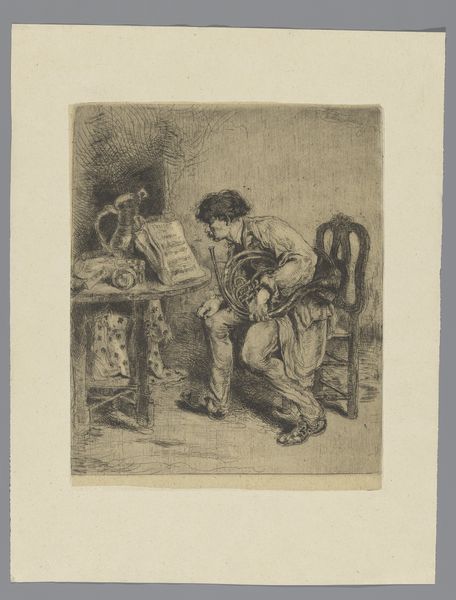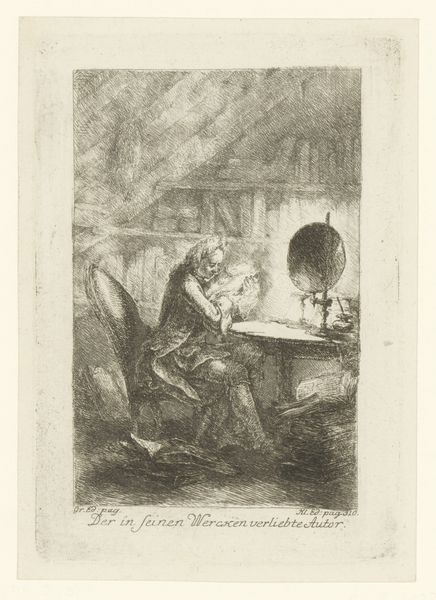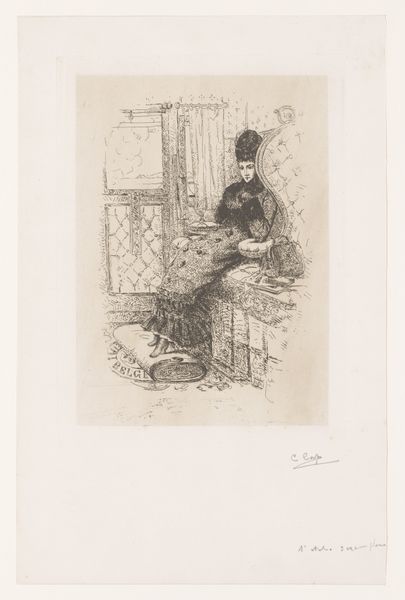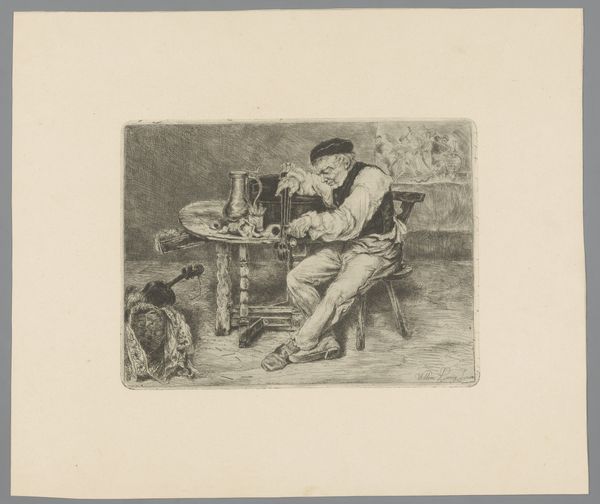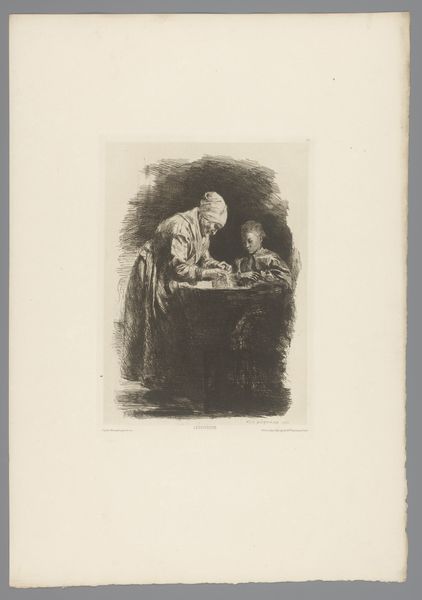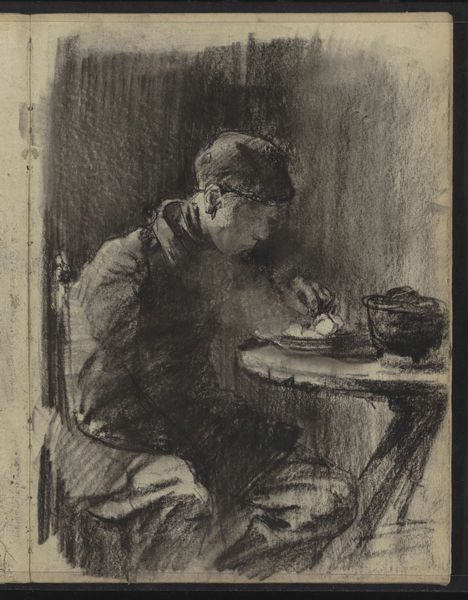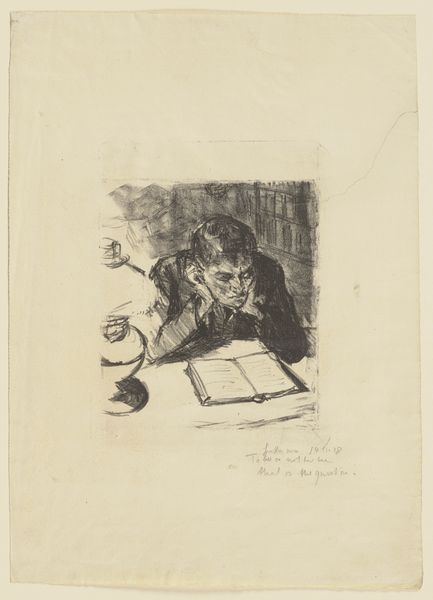
graphic-art, print, etching, intaglio
#
portrait
#
graphic-art
# print
#
etching
#
intaglio
Copyright: Public domain
Editor: We’re looking at Mariano Fortuny Marsal’s intaglio print of "The Friend Eduardo Zamacois y Zabala." It's a rather intimate scene, an etching of a man sitting at a table with a pitcher. There’s a stillness to it, almost melancholy. What symbols do you notice within the piece? Curator: The most potent symbol is the pitcher, possibly containing wine or some other potent potable. It is a symbol, across centuries, of camaraderie and shared experience. Fortuny subtly places it in the foreground, almost between us and Zamacois, as if inviting us to join. What does it suggest to you? Is he lonely, contemplative? Editor: Perhaps both. The etched lines give a sense of fleetingness, like capturing a transient moment of thought. Curator: Precisely! And consider Zamacois's posture – his hands clasped, head slightly bowed. These are visual cues laden with cultural meaning, suggesting introspection or perhaps a weariness. In this cultural memory, what reads to you as most important in this person's position and affect? Editor: I see a sense of quiet resilience, a personal moment framed for public viewing. What is he pushing through? Curator: Indeed! There’s a subtle but discernible psychological depth. The overall effect transmits to me the feeling of artistic communion but with a pensive tone – as if creativity is inevitably intertwined with introspection and perhaps loneliness. How has viewing this changed your view of intaglio prints? Editor: I had only seen them as graphic design. This intimate portrait really demonstrates how powerful prints can be as portraiture and as a study of psychology. Curator: And that duality, that tension between the public image and the private self, is a thread that runs throughout art history. Food for thought!
Comments
No comments
Be the first to comment and join the conversation on the ultimate creative platform.
